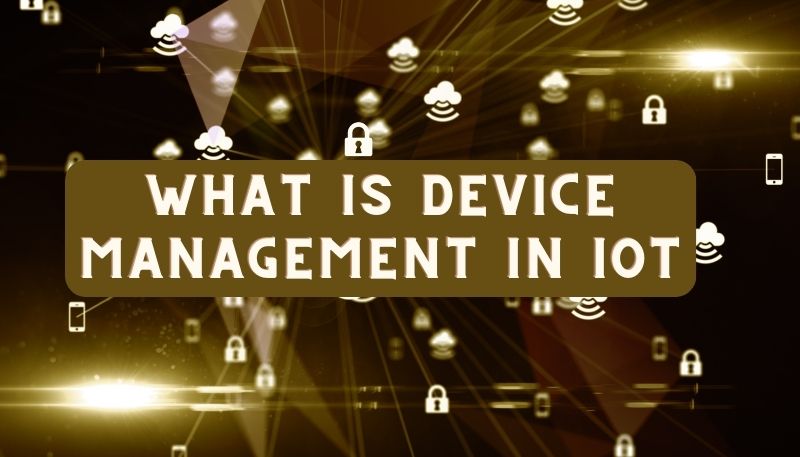Device management in IoT refers to the processes and tools used to manage and maintain the devices connected to an IoT network. This includes tasks such as device registration, configuration, monitoring, and updates.
Device management is critical for ensuring the proper functioning of IoT networks, as well as ensuring the security and privacy of the data being collected and transmitted. Without effective device management, IoT networks can become vulnerable to cyber-attacks, data breaches, and other security threats.
Some common tasks associated with IoT device management include:
- Device onboarding: This involves adding new devices to the network and assigning unique identifiers to each device. Two elements that are considered while doing device registration are –
- a). Security (two factor authentication is an example).
- b). Ease of registration with use of mobile devices (the QR code scanning of WhatsApp to link devices are good examples).
- Device configuration: This involves setting up the devices with the necessary software, firmware, and settings to ensure they function properly within the IoT network. The device configuration strategy must be carefully planned with consideration of the type of device (battery operated or powered), data bandwidth available, Topology of the network. In the case of IoT devices, feedback, and status of upgrade, retry mechanism, ease of configuration, bulk upgrade are some key considerations that are done during device configuration.
- Device monitoring: This involves tracking the performance and status of each device in the network, including factors such as power usage, battery status, data transmission rates, and potential issues or errors. Most solutions need basic rule engines at the device or server level for threshold comparisons. Which help to raise alerts / notification in case of deviations and helps improvise the device monitoring.
- Diagnostics: Troubleshooting issues with the devices remotely and diagnosing problems to minimize downtime and maximize performance. Error codes are defined and communicated for ease of diagnostics. In certain cases, a robust diagnostics mechanism to log and transmit data and or realtime debugging tools are required.
- Firmware updates: This involves updating the software on the devices to ensure they remain secure, up-to-date, and compatible with the other devices in the network. The firmware update strategy is aligned to the type of network topology, power available at device side, data bandwidth.
Kiki Vhyce Bodybuilder, Profession, Boyfriend & Net Worth test e for sale anita herbert: take a look to this magnificient bodybuilder
In a typical scenario, there is enough data speed and bandwidth available like LTE / Wi-Fi / Ethernet and the devices are powered. In such cases, the device firmware update patch is securely programmed on the device with one-to-one connection with a server. You will need an optimized different mechanism when it is a mesh network topology, limited data bandwidth or when it is a battery-operated device.
Smart mechanisms to ensure data authenticity and reliability of data transfer over limited bandwidth / patchy networks is a key consideration. Most IoT systems will ensure there are retry mechanisms, CRC implementations in communication. Backup images on device or ability to reset to factory configuration is enabled for contingency.
- Decommissioning: Removing devices from the network and securely erasing any data or configuration settings to prevent unauthorized access or data breaches is required.
- Security management: This involves implementing security protocols and measures to protect the devices and data from potential cyber threats and unauthorized access. Security is assessed at multiple levels at device level, device communication level, gateway to server and at server level. There are robust security mechanisms like ARM Trust zones, AES encryptions, TLS, SSL implementation, Ciphers, firewalls, apart from user level 2 step authentication, mechanisms to protect from cyber-attacks, jamming and other vulnerabilities. The security management and modules differ and are implemented as per the criticality of application and client requirements.
Effective device management in IoT is critical to ensure that devices are secure, reliable, and efficient, and can deliver the intended benefits of the IoT system.
Source-right is an IoT solution provider and has intensive expertise in enabling robust IoT device management solutions for both wired and wireless devices, LTE and radio devices, battery operated and powered devices. With NextGen IoT platform, MSME and device makers can now easily upgrade their products to support IoT and remote device management.
Read About what does the internet of things iot enable



